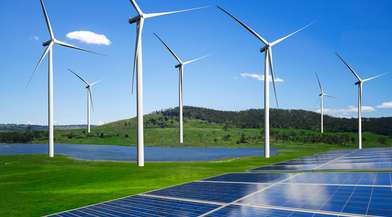Renewable Energy Accounting Guide: Issues, Rules & Treatments

Structures and the motivations of renewable energy entities to use them
Renewable energy companies often structured as Special Purpose Vehicles (SPVs). These are subsidiaries created by a parent company. They operate as separate legal entities with their own assets, liabilities and accounting and audit requirements.
As SPVs are separate legal entities, they have their own balance sheet and assets. Financial reporting and filings of financial statements are also managed separately to the parent company.
Read more about renewable energy accounting.
SPVs can be attractive options for renewable energy companies, for many reasons related to balancing risk with financial returns. In particular, they may be looking to:
- Attract new investors or funding
- Keep different projects independent
- Isolate financial risk (SPVs are bankruptcy-remote entities)
Renewable Energy Accounting Issues
Finance professionals in renewable energy companies will need to take multiple complexities into account. These include:
Depreciation of power generating equipment
In the renewable energy sector, investment in fixed assets, such as solar panels and wind turbines, accounts for the majority of construction costs. To allocate costs appropriately, finance managers need to ensure these fixed assets are depreciated periodically. The ‘useful life’ (i.e. the estimated years of future use) of the assets will also need to be calculated in accordance with corporate tax laws, which can vary depending on the jurisdiction of the asset.
Capital expenditures and repair expenses
For accounting purposes, capital expenditures are defined as expenditures that improve the value of the underlying assets. Repair expenses are defined as the cost necessary to maintain present value. In practice, it can be difficult to distinguish between them but there can be differences in tax treatment.
Equipment lease
As part of their finance strategy, many renewable energy operators lease power generating equipment instead of owing it themselves. There are normally two types of lease accounting methods:
- Finance leases: these are accounted for as sale and purchase transactions
- Operating leases: these are accounted for as rental transactions.
In summary, finance teams in the renewable energy industry have a number of additional factors to incorporate into their financial management processes. These all add to the complexity of managing such large, often global, operations. Read more about how AccountsIQ’s renewable energy accounting software can help.
Discover the five main benefits of AccountsIQ’s Finance System for Renewable Energy Companies.
Discover how AccountsIQ helps Renewable Energy Clients
-

Fincovi
Fincovi uses AccountsIQ for consolidated accounting and reporting of multiple wind and solar farm SPVsFind out more -

BayWa r.e.
BayWa r.e. is a global renewable energy developer with entities across the UK and Ireland. They needed a solution which …Find out more -

Getech
Moving four legacy systems from QuickBooks and Sage onto AccountsIQ has resulted in huge time-savings for this global company.Find out more